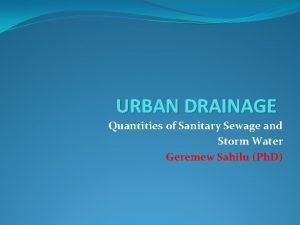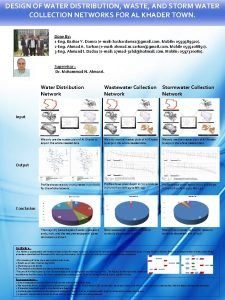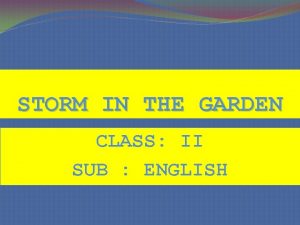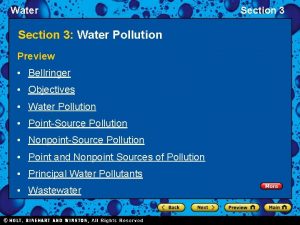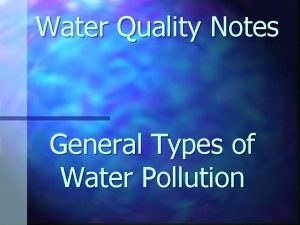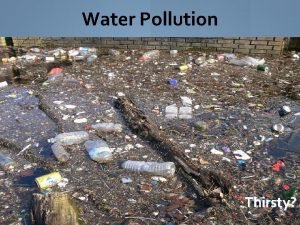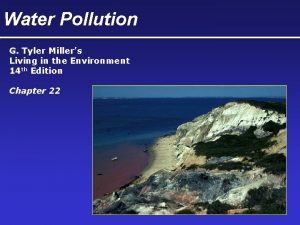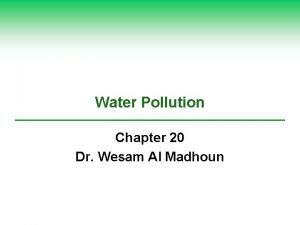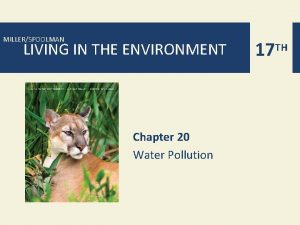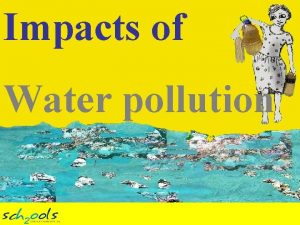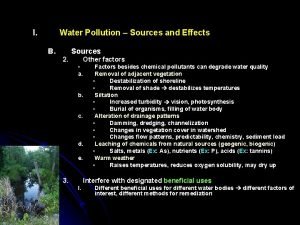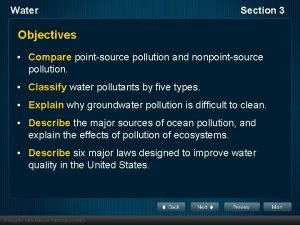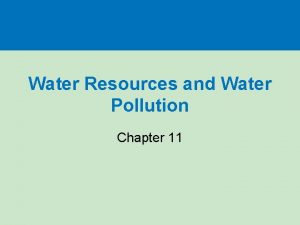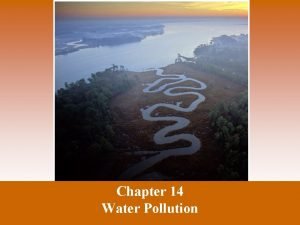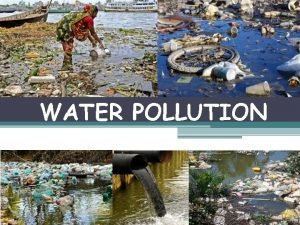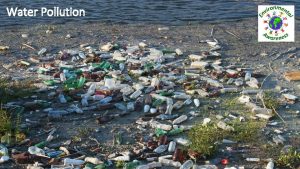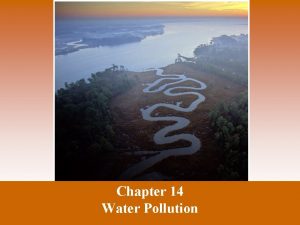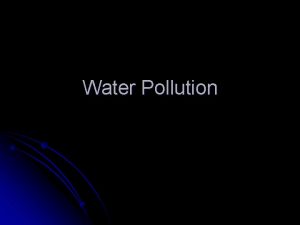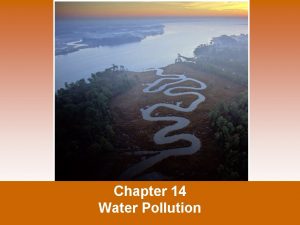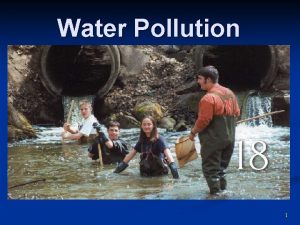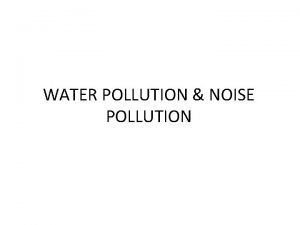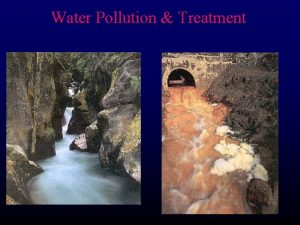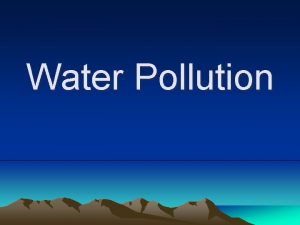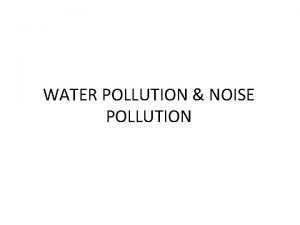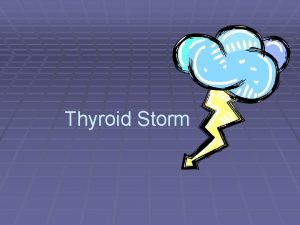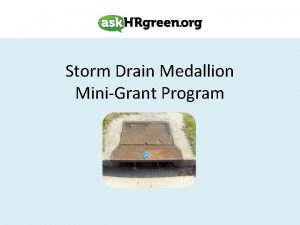Lesson 1 Storm Water Pollution PointNonpoint Pollution SD



















- Slides: 19

Lesson 1: Storm Water Pollution Point/Non-point Pollution SD 1 ENVIRONMENTAL UNIT

REVIEW: What is Water Pollution? Water pollution is the contamination of a water source by humans or water pollution is anything in water that does not belong.

REVIEW: What is Water Pollution? When rain falls from the sky, it is clean. However, when it hits the ground, rain collects pollution (litter, oil, chemicals, etc. ), eventually depositing polluted rain water into the nearest body of water (ponds, lakes, streams, rivers, etc. ).

Splash’s friend Freddy the Fish talks about storm water pollution. Click here to watch the video!

Soil erosion at a construction site Litter washed into a storm drain basin Oil washed into a natural body of water Farm animals wading and depositing manure into a stream POLLUTION PHOTOS

Paint washed down a storm drain Oil poured down a storm drain De-icing salt washing down a storm drain Algae bloom resulting from fertilizer runoff POLLUTION PHOTOS

REFLECT: Pollution Map Identify the following pollutants on the pollution map (workbook pg. 7) and their location (Residential Area, Golf Course, Construction Site, Industrial Plant, and Farm). § § § § § Litter Soil Manure Pet Waste Fertilizer Pesticide Oil Toxic Chemicals Soap

RESOURCES

REFLECT: Pollution Map Locate the storm pipe on the pollution map (workbook pg. 7). Where does the storm pipe start (top)? ______________ Where does the storm pipe end (bottom)? ______________

RESOURCES

REFLECT: Pollution Map When it rains, it drains. How do you think pollution gets into local bodies of water? Open Response: ________________________________________________________________________

REVIEW: Point Source Pollution: There is an identifiable point where pollution is entering into the water. Most often, point source pollution comes through a pipe. A simple way to remember this is you can “point” out where point source pollution is coming from.


REVIEW: Non-point Source Pollution Non‐point Source Pollution: The source of pollution is not identifiable. The pollution is entering water bodies from various areas. You cannot detect or point out where it is coming from.



REVIEW: Point/Non-point Pollution Look at the pollution map. 1. Identify the sources of pollution on the map. 2. List 5 pollutants found on the map and then identify their source as point source or non‐point source: Pollutant #1: ____________ Source: _________ Pollutant #2: ____________ Source: _________ Pollutant #3: ____________ Source: _________ Pollutant #4: ____________ Source: _________ Pollutant #5: ____________ Source: _________

RESOURCES

§ Pick up after pets. Be the Solution to Storm Water Pollution. § Don’t litter. § Wash cars on the grass or at a commercial car wash. § Never dump anything down storm drains. § Check cars for leaks. § Plant grass and gardens in bare spots. § Keep grass and leaves out of storm drains. Start a Storm Drain Marking Team! Click Here to Learn More!
 Water and water and water water
Water and water and water water Difference between dwf and wwf
Difference between dwf and wwf Storm water distribution design
Storm water distribution design Fish tank write three sentences
Fish tank write three sentences Sources of groundwater pollution
Sources of groundwater pollution Section 3 water pollution
Section 3 water pollution Water pollution through the years
Water pollution through the years Non-point source pollution
Non-point source pollution What are the terrible twelve water pollution
What are the terrible twelve water pollution Solutions to water pollution
Solutions to water pollution Water pollution introduction
Water pollution introduction Effects of land pollution on human health
Effects of land pollution on human health Definition of pollution in simple words
Definition of pollution in simple words Soil pollution images diagram
Soil pollution images diagram Methods to control water pollution
Methods to control water pollution Effects of water pollution
Effects of water pollution Ddt water pollution
Ddt water pollution What are 5 effects of water pollution?
What are 5 effects of water pollution? Aims and objectives of water pollution
Aims and objectives of water pollution Groundwater pollution
Groundwater pollution

